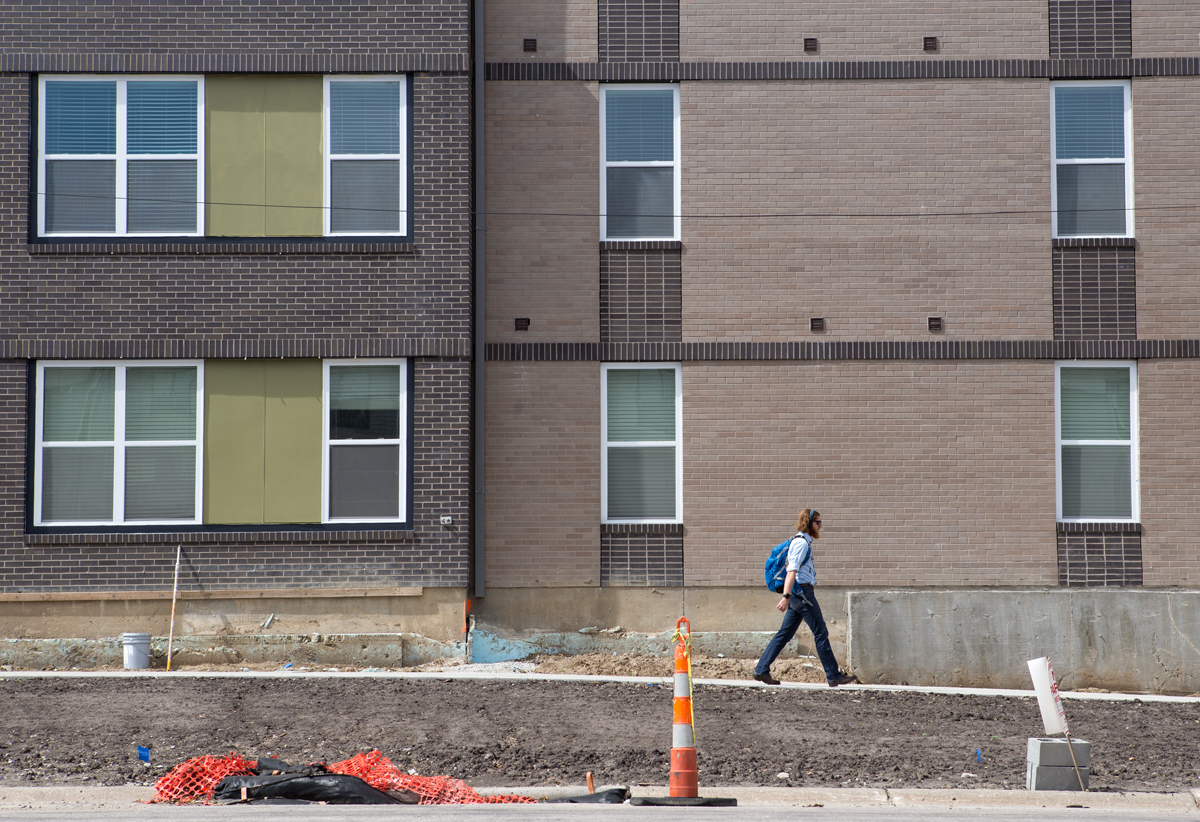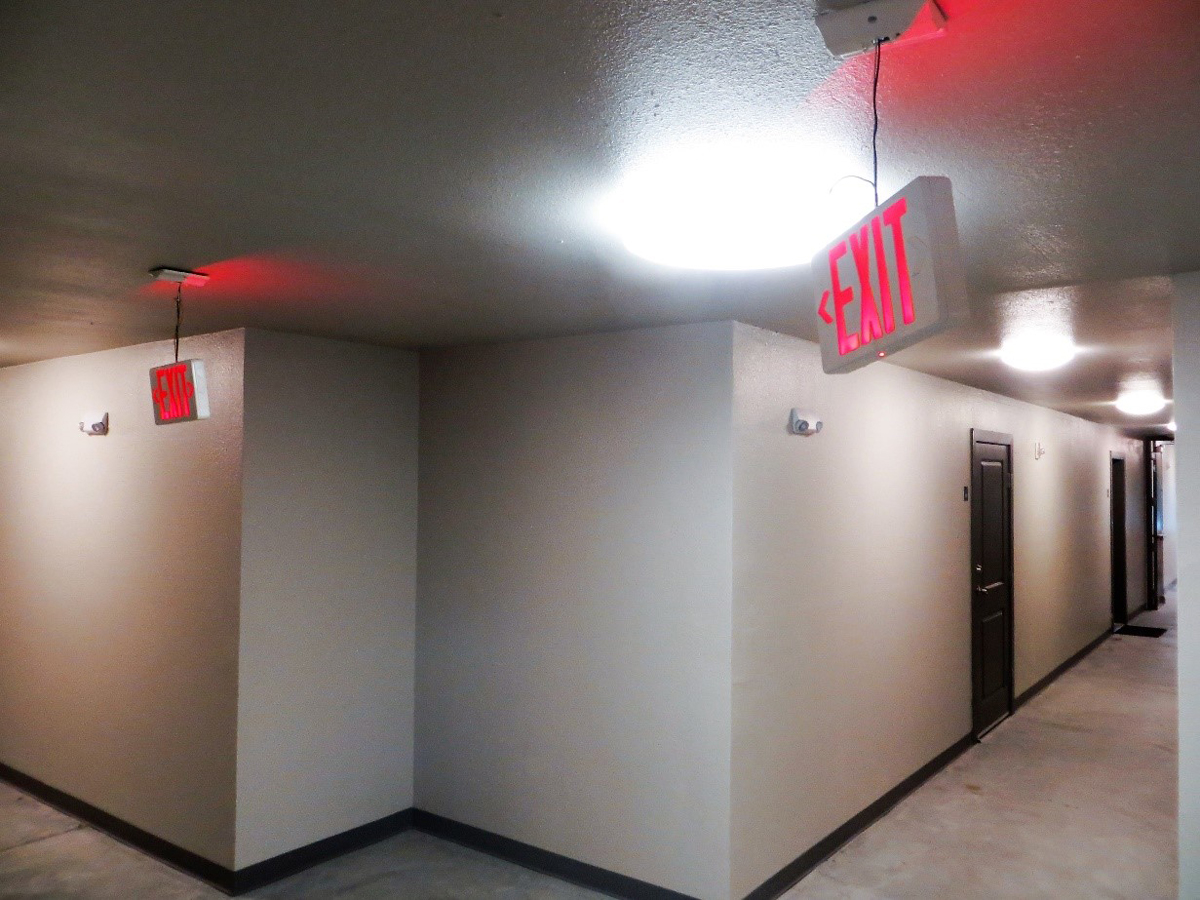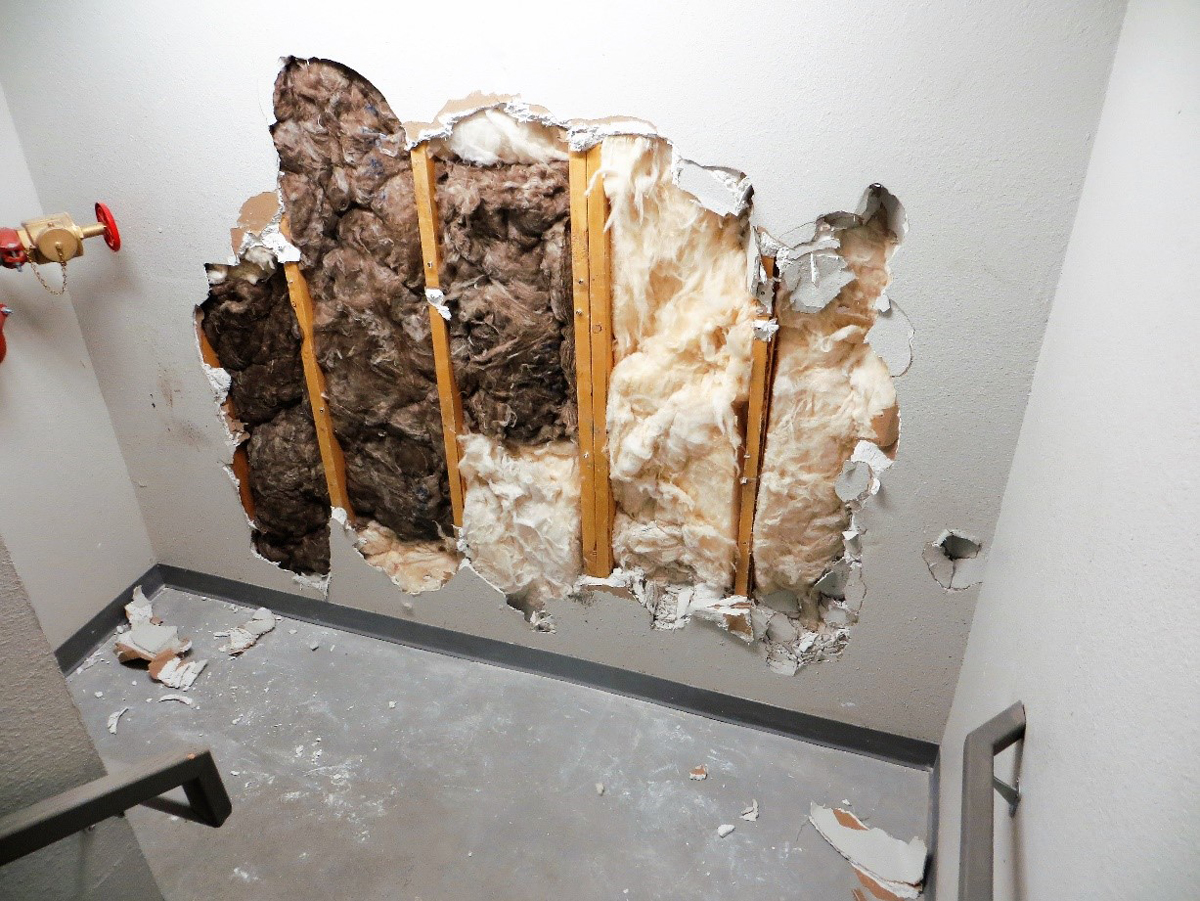

When Austin Moylan moved off campus in 2014, he hoped to be more independent and save money. After living in Smith Hall during his freshman year at the University of Nebraska-Lincoln, he moved into Claremont Apartments.
“I really enjoyed the dorms,” said Moylan, a senior broadcasting and mathematics double major. “They were a good time, and I met friends I am still close with, but it’s nice to have your own place and not be under university rules.”
Moylan isn’t alone. In the fall of 2015, about 8,700 students lived on campus, according to UNL. Those students made up about 35 percent of the 25,260 enrolled students.
That leaves about 16,500 students to find a place to live off campus, something property developers have noticed.
In 2012, there were approximately 650 beds downtown registered with the City of Lincoln. Now, there are nearly five times as many beds: 3,200. Five housing complexes, Aspen Heights, the 50/50, 8 | N Lofts, Latitude Apartments and Prime Place Apartments, accounting for more than 2,500 of those beds, all added to the housing market since 2013.
Often targeted toward students, the new downtown apartment complexes provide housing and other amenities for those looking for a place to live while in school. They also tend to rent by bedroom, rather than by unit.
And with the university aiming to increase enrollment – and by extension, the amount of students seeking off campus apartments – developers smelled a market for apartment complexes.
But, at least according to initial numbers, that market may not be developed yet.
Vacancy rates reported by student-oriented apartment complexes are higher than the most recent statewide average of 5.6 percent. Aspen and 8 | N reported a 36.7 and 27.7 percent vacancy rate, respectively. Only Prime Place reported a lower vacancy rate than the state average, at nearly 2 percent.
Justin Vollmer, the director of sales and marketing for Aspen, communicated through a spokesperson that he doesn't see oversaturation as an issue.
Vollmer said Aspen looks at area demographics and existing housing inventory, as well as the university enrollment figures before deciding to build.
Aspen found Lincoln to be a growing market and opened its location downtown this fall, adding a large number of beds to downtown Lincoln. When combined with 8 | N, the two apartment complexes’ provide almost 40 percent of the beds Lincoln classifies as downtown housing.
“We believe that there are an increasing number of choices for students at UNL but remain confident that the supply will meet the demand,” Vollmer said.

But there have been numerous reported problems with these complexes, something that may affect the number of students signing leases.
Students moving in have found unfinished construction, exposed nails, appliances that don't work and a host of other problems. Reports of spilled paint, dirty floors and clogged bathtubs at Prime Place garnered media attention after its opening in 2015 .
After living at Claremont Apartments his sophomore year, Moylan switched to Prime Place in August 2015. Shortly after moving in, he noticed residents weren’t treating the property well.
“People just treated the place kind of how it was given,” Moylan said. “It became kind of a trend to punch holes in the wall. There were entire walls that were just shredded with the insulation ripped out. People kicking walls in and punching walls in, up and down every stairwell in the building.”
Aaron Hunt, the property manager at Prime Place, said he dealt with the residents’ complaints.
“It's no secret that last year the opening of the building and remaining construction debris upon move in impacted our reputation, and we worked through those issues the first few weeks,” Hunt said.


But Prime Place isn't alone.
Brianna Kellar, a junior biochemistry major, subleased a room in the 50/50 this summer. She soon found that her roommate assignments had changed, and the two roommates she thought she was paired with would no longer be living with her. Kellar was also billed for rent after moving out.
When asked for a comment, Jerry Shoecraft, the manager of the 50/50, said the error was caused by a glitch in the system run by a third-party organization called rentpayment.com.
Kellar said she is new to living off campus and dealing with leases, but this experience has pushed her away from living in similar complexes in the future.
“It almost seems as if they’re trying to take advantage of my inexperience,” Kellar said.
But with the university’s goal to increase enrollment to 30,000, more students might be looking for places to live in the future.
- Brianna Kellar
Sue Gildersleeve, the director of UNL housing administration, said there are no other plans to add housing on campus other than the new East Campus facility. Expected to open in fall 2017, the hall will add 370 beds for students.
There are also plans to demolish Cather and Pound halls, but Gildersleeve said the university already compensated for the loss of beds by building University Suites and Eastside Suites.
Gildersleeve said she doesn’t expect students to stay on campus for all four years.
“For many students, it will make sense to live off campus at least part of their time while attending UNL,” Gildersleeve said.
The math is simple: if 4,000 more students come to UNL, most of them will need to find off-campus housing at some point in their college career.
Brandon Garrett, a long-range planner for the City of Lincoln, said even with current vacancy rates, the presence of residents is a positive for the downtown culture.
The new housing developments will encourage other developments to come in, creating an infrastructure in Lincoln that people find desirable, Garrett said. With as many businesses adding locations downtown, he said it’s hard to know what exactly is affecting what, but it’s more of a collective growth feeding on itself.
“There has been a boost in employment,” Garrett said. “More employment, more housing and more entertainment leads to more employment, more housing and more entertainment. Lincoln seems to really have those three things going for it downtown.”